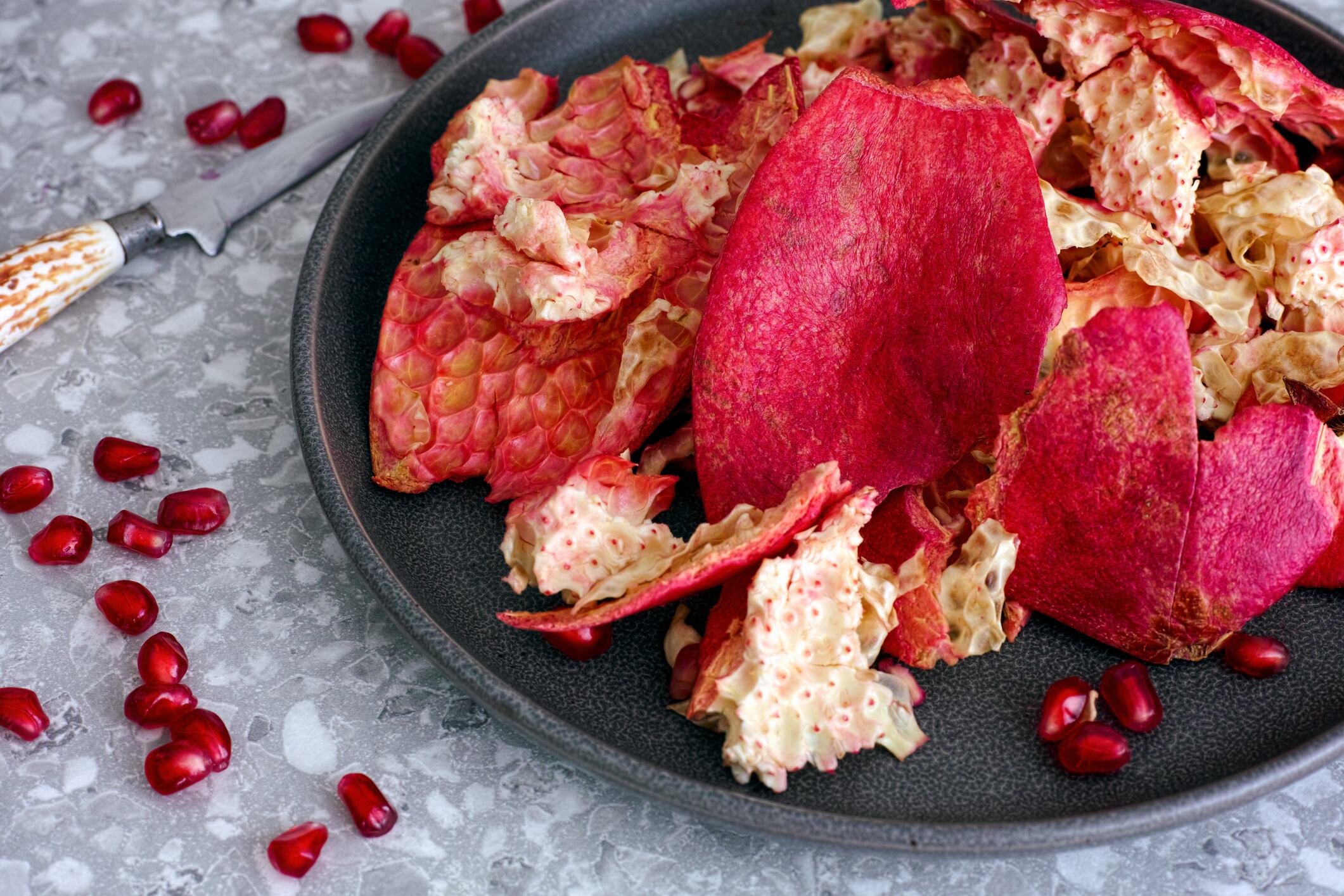The study, conducted by researchers at Dr. D. Y. Patil Dnyan Prasad University and Srinath College of Pharmacy, used peel extract from Punica granatum to reduce zinc salts into zinc oxide (ZnO) nanoparticles and “cap” them.
This meant coating the particles with polyphenols such as ellagic acid, gallic acid and quercetin.
Turning agro-waste into high-value UV filters
The team began with pomegranate peel, which usually makes up around 60% of the fruit and is typically thrown away. They dried and ground the peel, finding that simple water extraction gave the best yield and highest content of beneficial plant chemicals (phenols). The researchers then used this water extract to create nanoparticles.
In the synthesis stage, they added the peel extract to a zinc sulphate solution, carefully controlling the acidity (pH) and temperature. Using a statistical method (Box–Behnken Design), the team fine-tuned the conditions.
The optimal settings produced particles with an average size of about 194nm in liquid, with a moderate surface charge (zeta potential) that suggested the mixture was stable enough for lab work. However, they would likely need extra stabilisers, such as polymers, for long-term product storage.
Microscopy showed the actual particles were tiny and semi-spherical but tended to clump together, which the authors linked to the moderate surface charge.
X-ray analysis confirmed the particles were crystalline zinc oxide (ZnO), and other tests showed that the peel’s natural compounds (polyphenols) had successfully bonded to the nanoparticle surface.
Multifunctional performance
The peel-based ZnO nanoparticles were tested for several cosmetic benefits. In a DPPH assay measuring their ability to neutralise harmful free radicals, the particles showed strong antioxidant activity, performing almost as well as vitamin C (ascorbic acid).
The team also measured anti-tyrosinase activity. Tyrosinase is the enzyme that causes dark spots and tanning, so inhibiting it is key for skin brightening products. The nanoparticles inhibited 15% to 72% of this enzyme’s activity, outperforming the peel extract alone and closely matching the effectiveness of vitamin C.
In terms of sun protection, the ZnO nanoparticles strongly absorbed UV light and delivered an estimated sun protection factor (SPF) of 29.8 in a lab test. This high SPF suggested that the small size of the particles and the plant chemicals coating them worked together to enhance UV blocking, making them better than plain ZnO.
Antibacterial testing showed the particles inhibited harmful bacteria, creating inhibition zones of up to 19mm against Staphylococcus aureus and 17mm against Escherichia coli.
The results confirmed that the peel-functionalised ZnO performed better than chemically synthesised ZnO without the plant extract.
Opportunities and challenges
The research highlights several opportunities. It points to pomegranate peel – an abundant source of agro-waste — as a source of both green reducing agents and added-value actives for ZnO-based UV filters.
It also supports the positioning of such particles as multifunctional. In the same ingredient, formulators may be able to claim photoprotection, antioxidant activity, antibacterial support and anti-tyrosinase effects, although human data will be needed before making any consumer-facing claims.
Nevertheless, the researchers flagged several limitations. The zeta potential of −18.2mV indicates only borderline colloidal stability, which could translate into sedimentation or changes in particle size distribution in finished products. Additional stabilisation strategies will likely be required, particularly for high-load suspensions or transparent gels.
Moreover, all efficacy data beyond basic antimicrobial testing come from in vitro assays and an animal model. There are no human tolerability or efficacy data yet, and the contribution of individual peel constituents such as ellagic acid or quercetin has not been deconvoluted. The study also did not assess other ageing-relevant enzymes like collagenase or elastase.
Despite these caveats, the research adds to the evidence base for plant-assisted ZnO nanoparticles and gives formulators a process blueprint to reproduce the material.
For manufacturers and suppliers working at the intersection of sun care, anti-ageing and upcycled botanicals, pomegranate peel-derived ZnO nanoparticles may represent a promising platform for future cosmeceutical and dermocosmetic innovation.
Source: Cosmetics
“Phyto-Assisted Synthesis and Investigation of Zinc Oxide Nanoparticles for Their Anti-Aging, Sun Protection and Antibacterial Activity”
https://doi.org/10.3390/cosmetics12060238
Authors: Harshad S. Kapare, et al.




